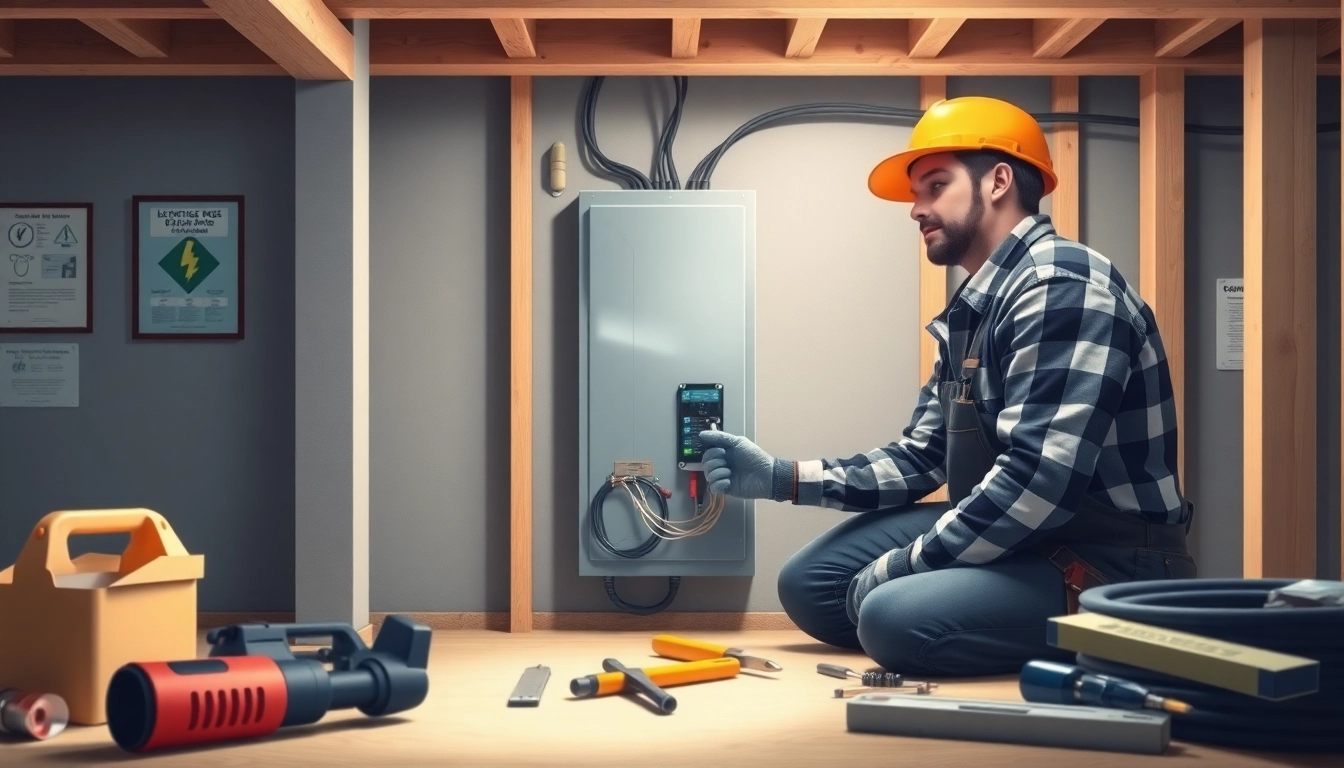
Understanding Electrical Panel Upgrades
As the heart of your home’s electrical system, the electrical panel plays a crucial role in determining how much power is available for your household needs. With the increasing reliance on electrical appliances, smart home devices, and electric vehicles, understanding when an Electrical Panel Upgrade is necessary has never been more critical. This article explores the intricacies of electrical panel upgrades, from recognizing the need for an upgrade to navigating the financial and safety implications.
What is an Electrical Panel Upgrade?
An electrical panel upgrade involves replacing or enhancing an existing electrical panel to accommodate increased power demands. The panel serves as a distribution point for electrical circuits, directing electricity to different parts of your home. While older panels might have been sufficient for standard household usage, today’s technological advancements and energy-efficient devices often necessitate higher amperage ratings.
Upgrades may range from switching out an outdated circuit breaker to installing a new panel that supports modern electrical loads, often measured in amperage—common ratings are 100, 150, or 200 amps.
Common Signs That Indicate a Need for Upgrade
Recognizing when it’s time to upgrade your electrical panel is critical for safety and efficiency. Here are common signs that suggest an upgrade is necessary:
- Flickering or Dimming Lights: Frequent disruptions in lighting may indicate an overloaded circuit.
- Tripped Breakers: If you find yourself frequently resetting breakers, your panel may not be able to handle the electrical load.
- Older Equipment: Homes built before the 1990s often have outdated panels that can’t support modern electrical needs.
- Electrical Appliances Malfunctioning: Appliances that require more power, such as HVAC systems or electric vehicles, may not operate efficiently with an older panel.
- Burning Smell or Discoloration: Any signs of burnt or melted wiring within the panel are critical indicators of malfunction.
Benefits of an Electrical Panel Upgrade
An upgrade isn’t just about solving problems; it provides various benefits, including:
- Increased Capacity: Higher amperage allows you to use multiple high-demand appliances simultaneously.
- Improved Safety: New panels comply with current electrical standards, ensuring better protection against electrical fires and shocks.
- Enhanced Home Value: A newly upgraded electrical system can boost your home’s resale value.
- Future-proofing: Anticipate the energy needs of modern technologies and eco-friendly additions like electric vehicles and smart home systems.
Choosing the Right Type of Electrical Panel
Understanding Different Panel Sizes and Amperages
When selecting a new electrical panel, understanding sizes and amperages is essential. Most modern homes require at least a 200-amp panel to efficiently manage the demands of contemporary electrical devices. A smaller 100-amp panel might suffice for older structures but may not keep pace with increasing energy consumption.
It is critical to evaluate total electrical load requirements, which include lights, outlets, appliances, and other electronic devices. Calculating your total load will guide you toward the appropriate panel size.
Evaluating Single vs. Double-Pole Breakers
Your choice between single and double-pole breakers can impact your electrical system’s performance:
- Single-Pole Breakers: These breakers supply 120 volts, suitable for general circuits like lighting and outlets.
- Double-Pole Breakers: Required for 240-volt appliances such as water heaters, electric ranges, or central air conditioners, they draw power from both bus bars in the panel, necessitating more space.
Deciding on the right mix of breakers is crucial based on your household’s electrical needs.
Considerations for Smart Home Integration
As homes become increasingly technology-driven, integrating smart home systems into your electrical panel can enhance efficiency and convenience. Ensure that the chosen electrical panel can support how smart devices communicate with each other and manage electrical loads effectively. Modern panels often come with smart capabilities, allowing remote monitoring and control of energy usage.
The Upgrade Process: What to Expect
Preparing Your Home for the Upgrade
Preparation is key to a smooth upgrade process. Steps include:
- Assessing Electrical Load Needs: Conduct an assessment to determine power requirements.
- Engaging with Local Codes: Familiarize yourself with local building codes regarding electrical installations.
- Consulting Professionals: Speak with licensed electricians to discuss options and recommendations.
- Securing Permits: Most municipalities require permits for electrical work, which your electrician can assist you in obtaining.
Hiring a Licensed Electrician
Choosing the right professional for your electrical panel upgrade is paramount. Look for electricians with experience in panel upgrades, positive reviews, and relevant licenses. A licensed electrician will ensure that all work is performed to code, minimizing the risks associated with electrical work.
Understanding the Timeframe and Cost of Upgrades
The duration and cost of upgrading an electrical panel can vary widely based on various factors:
- Panel Size: Larger panels or those with additional features (like smart capabilities) require more time to install.
- Existing Wiring Condition: Older homes might have outdated wiring that needs to be replaced alongside the panel.
- Location: Accessibility of the panel and local labor rates can affect costs.
On average, homeowners can expect to pay between $800 and $3,000 for an upgrade, depending on their specific needs and local market rates.
Financial Aspects of Electrical Panel Upgrades
Cost Breakdown of an Electrical Panel Upgrade
Understanding the cost breakdown can help you prepare financially for an upgrade:
- Basic Costs: The average cost of an electrical panel upgrade can range from $1,300 to $3,000, depending on amperage and components.
- Additional Upgrades: If new wiring or circuit changes are necessary, expect additional costs; this may range from $500 to over $2,000.
- Labor Costs: Professional installation will typically comprise 50% or more of the overall cost.
Potential Tax Credits and Rebates
There are numerous tax incentives available for electrical upgrades, especially if they include energy-efficient technologies. Rebates may be available for specific electrical panel upgrades, particularly those supporting electric vehicle installations. Always check local and federal incentives that may help offset costs.
Financing Options for Upgrades
Many homeowners may find financing options helpful for managing upgrade costs. Consider the following:
- Home Improvement Loans: Many lenders offer specific loans for home improvement projects.
- Credit Cards: If you can manage payments, credit cards can be a quick way to finance smaller scale upgrades.
- Energy Efficiency Programs: Some energy companies offer financing for energy-efficient upgrades, including electrical panels.
Safety and Compliance Considerations
Local Electrical Codes and Standards
Upgrading your panel must adhere to local electrical codes, which dictate installation standards. Failure to comply can lead to safety hazards, fines, and complications with future home sales. Consult with your electrician to ensure all work follows relevant safety standards.
Importance of Professional Installation
Because of the complexity and risks associated with electrical work, hiring a licensed electrician is crucial. Not only will they ensure compliance with local laws, but they will also guarantee a safe installation that reduces the likelihood of future hazards.
Post-Upgrade Safety Checks
After an upgrade, it’s vital to conduct safety checks to confirm that the electrical system operates efficiently and safely. Ask your electrician to perform a thorough inspection of the panel and all connected circuits. Regular maintenance and checks can prevent issues before they arise.







